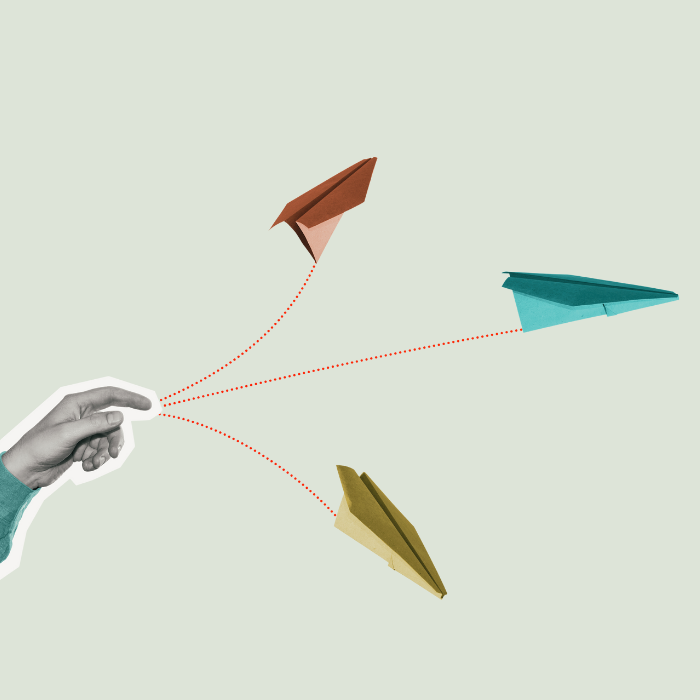Want to take your kids around the world but can’t afford the airfare? Check-in to your nearest computer and let Google Earth take you on an international trip with a difference.
“What are you doing?” asked my 9-year old son.
I didn’t even look up from my computer screen. Something was wrong and the programme wasn’t showing me Eiffel Tower, even though I entered its name into the search box. “Researching Google Earth for a Tots To Teens article. Have you practised your piano?”
“Yes, Mummy. Can I show you how Google Earth actually works?”
That Sunday afternoon I learnt two things. How Google Earth actually works and that sometimes our children already know all the technology stuff we’d like to teach them.
what is google earth?
Google Earth helps children visualise and discover the world around them. It’s an online programme you download (www.google.co.nz/earth/download/ge/) that lets you explore the earth using 3D maps and 3D street views. It also has some library images of forests and mountains, so you can see inside the White House, including all the details of the Oval Office décor, as well as the spots on a jaguar inside the Amazon Jungle.
Imagine that. A tool that lets you fly anywhere on earth to view buildings, terrain and satellite imagery. It lets you explore oceans, land on the moon, see the galaxy. For the adventurous, it even has a flight simulator that allows you to pilot an aeroplane while you’re flying around the planet.
Google Earth can provide a lot of information about a location: roads, border labels, parks, etc. Viewing it all at once would be confusing, so the information is stored in handy layers that you can turn on or off as you need them.
how do you use google earth?
With younger children, you can start off by showing them your house, their kindy, their best friend’s house. If they have family in another city or another country, you can expand to show them that. If not, you can discover where Nemo and Dory live and the route Nemo travelled from the reef to Sydney. Older children can explore the Paris of the Smurfs 2 movie.
School children might be interested in the following:
- Finding the globe’s volcanoes and researching details about their locations.
- Mapping the journey our food takes from the farm to our plate, and investigating the environmental impact of food choices.
- Travelling back in time to learn about their own neighbourhood and how it’s changed over the years.
- Viewing shipwrecks.
- Using the Ruler tool to calculate distances.
- Downloading free maths activities for Google Earth from www.realworldmath.org/.
- Exploring with Street View Oceans: see coral reefs in Bermuda, sea lions frolicking in the Galapagos sea, turtles in the Great Barrier Reef and a sunken car hosting sea life.
google earth and parental involvement
“How do you and your classmates use Google Earth?” I ask my son.
“We fly around the world,” he tells me. “We put pins in interesting locations.”
Indeed, a pin called My Office decorates the Beehive and My Bedroom is on Mars. Great for creativity, expanding your imagination, and role-playing with your friends, but that’s not how to learn science or social sciences.
“So let’s have a look at our house,” I say. “Look, there’s our car right there. Do you think it’s a good idea that everybody can see what cars are parked at our house?”
We have a brief discussion about privacy. We Google “Can Google Earth invade your privacy?” Fortunately, it turns out Google Earth is not a live Geographic Information System (GIS). Rather, it’s a collection of maps and geographic information that’s weeks old. So people can’t spy on us right at this very minute, though they might learn what delivery truck was at our house last week. Still, there are confidential places in the world, such as military bases and nuclear plants that are blanked out on Google Earth.
“Shall we look at the Wonders of the World?” I suggest. “Maybe Victoria Falls?”
“What’s that?” my son asks.
I give a whoop of joy. Yes! I can be of use as a parent. Because this is the amazing thing: children still need our help and guidance with Google Earth. They know how to upgrade the software to the paid-for option, change the views and crash-land the SR22 plane provided, but they don’t know quite how much they don’t know about the world out there. We need to pique their curiosity about what it’s like to walk the streets of Paris, whet their appetite for more knowledge about our galaxy, make them want to calculate the distance between New York and Washington DC.
Our children look to us to provide them with context and purpose. That goes for Google Earth as well as for all our children’s learning.
geo browsers
Google Earth is what is known as a geographic browser. Other examples of geo browsers include NASA’s World Wind, ESRI’s ArcGIS Explorer, GeoFusions’ GeoPlayer, and EarthBrowser by Lunar Software.
google map maker
With Google Map Maker as a tool, you can update your neighbourhood’s geographic information. Your updates may be visible to the world through Google Maps and Google Earth.
YouTube EDU
YouTube EDU allows you to access educational videos such as short lectures, full courses and inspirational speeches. It’s like YouTube but geared towards learning.
The best thing is, you don’t have to be a passive consumer. Children can have fun creating educational videos (e.g. how to make a potato battery, how to sew on a button, how to make origami) and uploading it to YouTube Edu.
google cultural institute
Google Cultural Institute is a fascinating collection of photos, manuscripts, letters, and video interviews. Grouped together into topics, they allow you to discover more about subjects as diverse as Nelson Mandela, Women in Culture, Archaeology of India, Jewish History, Development of Computers, Impressionist Art and many others.
improve your search ability
Search Education (www.google.co.nz/insidesearch/searcheducation) is a fantastic tool that teaches children how to become skilled internet searchers, critical thinkers and independent learners.
A Google a Day (www.agoogleaday.com) provides a daily puzzle from Google. You get a question and have to devise a Google search in order to answer it. There’s no right way to design the Internet search, but there’s only one right answer. An example of such a question: “Who founded the company named for the man who invented vulcanised rubber?”
google translate
A free online translator, Google Translate, can help you translate text to and from over 70 languages. A caveat here: while this service may allow you to understand a French article or a Spanish website, don’t attempt to translate full sentences in order to impress your email buddy overseas: the translating engine does not understand idioms or slang, so the resulting translated text is often comical or even nonsensical.
Yvonne Eve Walus is an education specialist, a senior consultant to Creative Learning Systems in Auckland, and a mother of two children.








